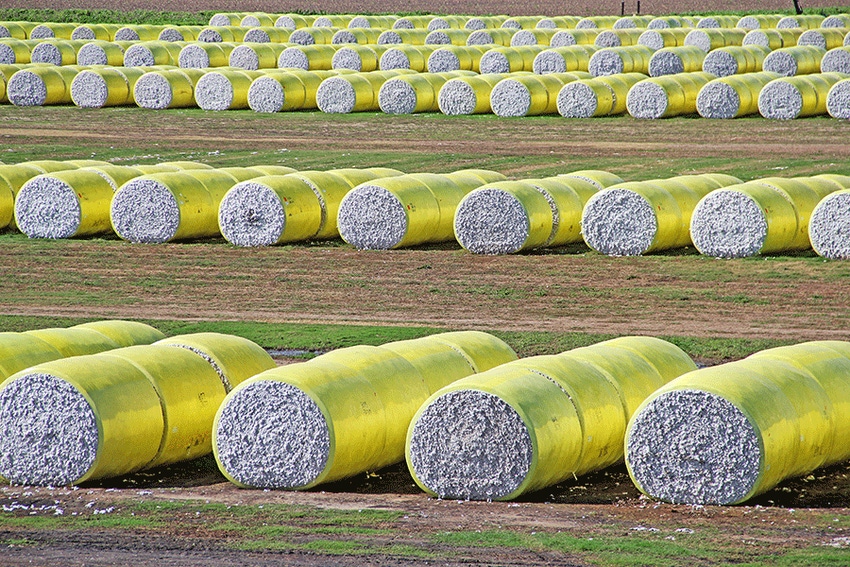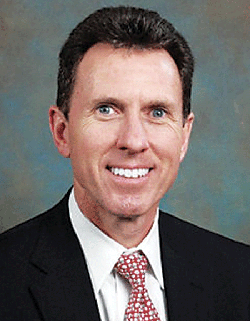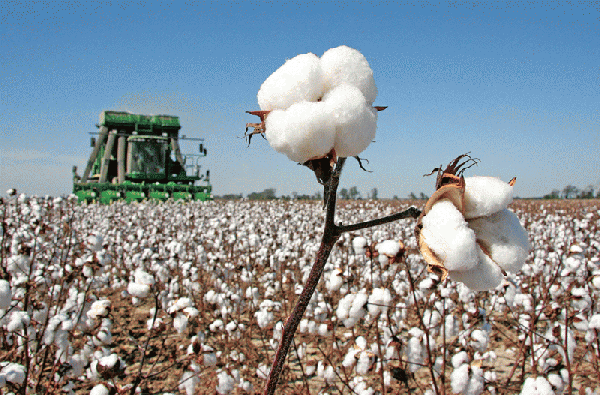
Even though implementation is still under way for programs included in the 2014 farm bill, there are “already amendments being introduced in Congress to try and weaken the legislation,” says Gary Adams, president and chief executive officer of the National Cotton Council.

GARY ADAMS
“Both from a market perspective and a policy perspective, U.S. cotton still has a lot of challenges, and our staff and leadership take them all very seriously,” he said at the annual joint meeting of the Mississippi Boll Weevil Management Corporation and the Mississippi Farm Bureau Federation Cotton Policy Committee. “We have to remain diligent to protect cotton’s interests as implementation of this legislation moves forward.”
The bill brought major changes, he says, including a resolution of the long-running trade dispute with Brazil, and provisions for new insurance products specific to cotton, including the Stacked Income Protection Plan (STAX).
Stay current on what’s happening in Mid-South agriculture: Subscribe to Delta Farm Press Daily.
“These new insurance products have now been implemented in more than 99 percent of the cotton counties across the U.S. We’re just now starting to see some of the initial data as to how many producers have opted to purchase a STAX product. Across the cotton belt, the numbers would suggest about 12,000 policies have been purchased, and that’s in addition to any other crop insurance that may have been purchased on those acres.”
In Mississippi, Adams says, data show about 430 policies have been bought. “We don’t yet know how many acres that covers. The numbers indicate that premiums paid have averaged about $8 per acre for policies that have been purchased.
“We still have some issues to work through for next year — changes we hope will be in place when producers are evaluating their insurance purchases for 2016. These include flexibility on how you purchase STAX by production practice; for example, irrigated versus non-irrigated.”
The council will continue its wide-ranging educational effort on farm policy changes, Adams says. Numerous seminars were held this past winter and spring to inform growers about provisions of the legislation.
A lot of changes for producers to absorb
“Changes in this legislation have been a lot for producers to absorb, not only for new insurance products, but also the choices between Agricultural Risk Coverage (ARC) and Price Loss Coverage (PLC) for other commodities, understanding how generic base now plays into a producer’s bottom line, and the amount of government payments that may be received.

“As we’re working through implementation of the legislation, a key issue is the payment limit provisions," says Gary Adams.
“As we’re working through implementation of the legislation, a key issue is the payment limit provisions. There is a $125,000 payment limit per person or legal entity, that applies to essentially all marketing loan gains or loan deficiency payments received for a crop, as well as any ARC and PLC payments. One limit applies to cotton, grains, and soybeans, while peanuts maintains its separate $125,000 limit. Fortunately, insurance indemnities are outside of this limit.
“In the case of cotton and the marketing loan, lower cotton prices over the past several months have led to marketing loan gains off and on — more on than off — since October, and those are applying to a producer’s limit. USDA is still working through the process of tracking those payments and attribute them back to the individual and determine how they will eventually apply to the $125,000 limit.
“We’ve been working with them in this process to try and minimize disruption to producers, but some are still probably going to be surprised as they look ahead to October and realize there have been marketing loan benefits that have been attributing to that limit. In October, that same limit that will apply to any ARC or PLC payments that are made for the 2014 crop.
“We want to make sure that as it applies to the marketing loan, it doesn’t impede the flow of cotton to the market,” Adams says. “We don’t want it to tie up cotton in the loan and cause forfeitures, and we certainly want to allow cotton to continue to move into the market.”
Relief from payment limit
One of the issues, he says, has been “to also look for ways within Congress to try and get some relief from the payment limit as it applies to the marketing loan. Before the 2008 farm bill, we had commodity certificates in place that would apply if commodities were redeemed from the loan. Those redemptions did not apply to the limit that was in place.”

"Some producers are probably going to be surprised as they look ahead to October and realize there have been marketing loan benefits that have been attributing to the payment limit," Gary Adams says.
The authority to use certificates was removed in the 2008 bill, Adams notes. “We’ve looked at opportunities to restore that authority through the appropriations process. Agricultural appropriations legislation that moved out of the House subcommittee in late June included language that would restore the authority for USDA to use certificates for redemption of marketing loans. Such certificate redemptions would not apply toward the limit.
“It wouldn’t remove the limit from loan deficiency payments or marketing loan redemptions that occur with cash, but it would allow the use of certificates. As the full House Appropriations Committee was marking up the agricultural appropriations bill, there was amendment by Rep. Jeff Fortenberry, R-Nebr., to strike that language, but it failed on a voice vote.
“Fortunately, the language survived the full Appropriations Committee markup. But the issue still has to be addressed in the Senate and then a House/Senate conference. We will continue to work on this issue to try and obtain some relief on payment limits as it applies to the marketing loan.”
The House agricultural appropriations measure includes full funding for pest accounts (boll weevil, pink bollworm, etc.), Adams says, and the market promotion program used by Cotton Council International is fully funded. “Thus far, we’ve been able to avoid any damaging amendments for these appropriations.”
Check Current Cotton Futures Prices
The council continues working on the farm bill provision that defines what it means to be “actively engaged” in farming, he says.
“You have to be considered actively engaged to be eligible for benefits under Farm Service Agency-delivered programs, including ARC and PLC, as well as marketing loan gains. The legislation directed USDA to look at redefining what constitutes a ‘significant contribution’ of active personal management. USDA put forth a rule that would limit the number of persons that could be considered actively engaged, based on their contribution of management.
“We have submitted comments on this rule, hoping to relax some of the restrictions drafted by USDA, and make sure those eligibility requirements don’t become any more onerous than they already are. We should have a better indication on this sometime later in the fall.”
Pollinator concerns, other issues

Pollinator concerns are a major focus of Congress, the White House, and the Environmental Protection Agency.
Regulatory issues continue to get attention, Adams says, with pollinator concerns the focus of Congress, the White House, and the Environmental Protection Agency. “The proactive efforts by the Mississippi Farm Bureau Federation, Extension Service, and other organizations in developing a state plan is something we’ve supported. Dr. Don Parker of the council staff has been very involved in the neonicotinoid/pollinator issue over the last several years, and will continue to work on it.
“We will also continue to monitor EPA’s efforts to regulate the waters of the U.S., a controversial issue, and we’ll keep working with the USDA and the EPA on the regulatory process for bringing new agchem products to the market.”
In the marketing arena, Adams says, “We’ve got to find ways to increase demand for cotton. Competition from man-made fibers has never been stronger, and we need innovative new ways to promote cotton, to look for new uses, and to try and rebuild and grow cotton demand. That includes continuing to push for leveling the playing field in world markets and pushing for other countries to be accountable and transparent.
“We have to look at every way we can try and improve cotton’s profitability. From a policy standpoint, we will look at ways to make adjustments to programs, and opportunities to make changes, either through congressional action or administrative action, to provide relief on payment limits.”
There is “an ongoing challenge,” Adams says, to educate new members of Congress about the importance of the cotton industry and its contributions to their district or state. “It is a challenging environment, and we’re going to do all we can to grow our resources within our political action committee to give us better opportunities to weigh in and hopefully influence policy.”
About the Author(s)
You May Also Like




